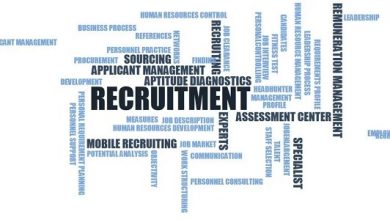What are HR Policies their values and vision and importance
What are HR Policies
HR policies are a set of rules that aim to direct employees on how they should proceed in relation to work in search of the organization and standardization of company activities.
Do your company’s employees understand exactly what they can and cannot do internally? Do you know, for example, if it is possible to date a co-worker or indicate relatives for a vacancy? If not, it may be time to review the company’s HR policies.
They serve as a basis for decision-making and planning, being essential for the company to act in an organized and standardized way to achieve its goals.
In addition, these guidelines are guidelines for employees to keep in line with the image that the organization wants to convey to the market.
Every company has a format and a standard that it wants to follow, and these characteristics are defined based on that company’s policies, by its set of rules to direct employees on how they should proceed in relation to work .
This involves several factors such as the ethical conduct and posture of the organization, the recruitment and selection process, career plan , company culture, compensation, benefits and all processes involving people management.
Based on the Human Resources policies, it is possible to create a standard within the company and, thus, everyone will understand how they should act in each situation and will be aware of the commitment they have with the company.
The difference between HR policies and values and vision
When we talk about Human Resources policies, it is common to associate them with the company’s vision and values, but these are different concepts and are interconnected.
While the organization’s values and vision involve rules of conduct and ethics and the company’s commitment to employees and society, policies define the best ways to put this vision and values into practice.
In other words: policies are defined so that the company can precisely implement its business vision and values that it believes are part of its foundation to grow and develop based on what it believes to be right, fair and coherent.
We can also say that policies are more focused on managing people and processes.
Therefore, they must have the appreciation of people to support the planning of these standards.
The importance of HR policies and practices for the organization
If we take into account that it is the employees who make an organization successful, we will understand that HR policies and management pass through all sectors, as all activities are performed by the people of a company.
For example: if an industry needs to produce more, workers must be engaged to always be motivated with their tasks and deliver what is expected or exceed expectations.
If a retail store needs to sell more, it will be necessary to train employees to serve the customer well, offer training to know all the products sold and invest in a good after-sales service.
This means that, regardless of the segment or size of the company, there will always be processes — and people executing those processes — and this needs to be standardized . Otherwise, the organization will not achieve its goals.
Managing human capital is not a simple task, as it involves a number of factors such as different work styles and personalities, conflicts in the internal environment, competitiveness and different emotions in the corporate environment.
Therefore, when the company does not fully understand its role as a policy manager to deal with possible scenarios and situations that involve people, what was supposed to be a challenging job can become a real nightmare.
We can say that understanding well what they are and the importance of putting HR policies into practice is investing in the generation of value for the organization and in its competitive potential for the market.
In addition, drawing up good Human Resources practices and policies is a way to promote more security both for employees – who will understand exactly what their roles are and how they will perform these roles – and for the organization, which will avoid fines and actions labor.
The most common HR policies and business rules
Business rules serve as a foundation to define and align the relationship between the company and employees, in addition to promoting a more transparent work environment between teams and adjusted to the expectations of both parties.
Thinking about these challenges, we have selected the main areas that involve HR policies and management whose activities cannot be neglected in your company.
Follow up, see if it makes sense and adapt according to the reality of the organization.
1-Recruitment and selection
Imagine that in the HR department there are five professionals responsible for the activities and, when recruiting and selecting professionals, each one develops the process in a different way and how do you find it more convenient?
What will be the image of this organization in the labor market? A worker, for example, will comment to another worker who participated in the process, but found the job description very confusing.
Another will praise, saying that he had a different experience. At the very least, the idea of lack of alignment and standardization for carrying out internal processes will be conveyed.
Not to mention when this lack of strategy results in losses for the company, such as the loss of real talent.
Therefore, it is important to always define recruitment and selection policies that involve:
- good description of the vacancy and the activities to be developed;
- definition of the means in which the vacancies will be published;
- how many and which steps will be necessary in the process, in order to better guide the professional;
- definition of onboarding policies and onboarding process for new employees.
2-Training
In the same way that recruitment must be standardized, all training carried out in the company also needs to have clear definitions of how coaches should proceed and what expectations employees may have in relation to the process.
It is also necessary to pay attention not to commit injustice and offer training to certain sectors or employees, and not others.
Everyone needs to be aligned in relation to the company’s activities and have the same access to professional development and training.
3-Positions and salaries
It is a somewhat sad reality, but there are many companies in which the promotion of positions is not seen as something that should be standardized and pass through the sieve of organizational policies.
As a result, many sponsored persons are unfairly promoted and often inconsistent with their position or performance within the company, causing an imbalance in the organizational climate.
In this sense, it is coherent and positive for the organization to adopt a job and salary plan.
In addition to facilitating the recognition of those who really deserve good opportunities for salary increases and promotion, it is a way of making the environment healthier and retaining employees.
4-Performance evaluation
Promoting and offering positions and salaries fairly brings us to this very important point for any company that wants to adopt good internal policies: the standardization of performance evaluations.
It is necessary to define the frequency of these evaluations and in what ways they will be implemented, observing the purpose for which each one will be carried out and the use of this data for the implementation of improvements for the company and for the employees.
5-Resignation
Every company needs to adopt a clear, concise termination process, but without giving up a humanized dismissal .
This step must be very well evaluated by HR managers and area leaders, mainly because it has a direct relationship with the organization’s image.
When a termination is done in a disorderly manner and without following a pattern, the company conveys the idea that it does not value professional capital and does not have well-structured processes.
In addition to giving a bad impression, when there are no rules to be followed, the institution can still face labor lawsuits for not paying attention to the legal issues that involve termination processes.
5 best practice tips for implementing HR policies
Did you notice how HR policies impact all the company’s processes, from the admission of employees to their dismissal?
But how to put this understanding into practice? Read on, as we have selected some important tips!
1. Analyze the organizational climate
If the company has not yet defined HR policies or needs to revisit some rules to promote improvements, it is important to conduct a climate survey among employees.
Through this type of evaluation, it will be possible to identify how the organizational climate is going , to understand how the relationship between employees and managers is, and how is the satisfaction of workers with the processes in the company.
Remember that when it comes to managing people, workers are your most important and reliable source of information and all notes must be considered.
During the survey, as a suggestion, direct and open questions can be asked about the perception of the company in general, such as:
- Which activities do you like the most and which ones do you like least and why?
- What should be improved internally and suggestions on how to do this?
- What are the organization’s biggest shortcomings, from the point of view of promoting professional development?
- How is the relationship with colleagues and leaders ?
- What are the main mistakes and successes of management?
- How does HR work with workers and which points deserve attention to promote improvements?
It is important to point out that for this type of research, it is best to request the answers anonymously, in order not to compromise the relationship between HR and employees and not to cause any kind of embarrassment or feeling of coercion.
2. Also assess the managers’ perception
A survey similar to the previous one can be carried out with leaders and managers with the same objective: to perceive the level of satisfaction among them and receive feedback for improvements.
At this point, it is important to assess the perception of these people in relation to the activities carried out by HR and understand in what ways these managers need the sector’s help.
For example:
- what is the vision of the leaders in relation to the recruitment and selection processes and how can they improve them?
- What are the deficiencies in the training and integration processes of each professional?
- How can HR participate more in planning goals for each sector?
3. Establish metrics and goals to define HR policies
Metrics and goals for HR, a sector that manages all employee-oriented processes? Yea! There’s nothing wrong with setting goals for an industry as strategic as HR.
On the contrary: it is a healthy activity that will help to outline the next steps. In this sense, good questions are:
- Is the sector attentive to the promotion of ethics and transparency in the work environment and in the execution of all its activities? How has this been done?
- Does HR always look at the company’s turnover rates and understand why they are high or low ?
- Has the department been able to implement its activities consistently and coherently with the business or does it live off putting out fires?
- Are the policies defined above in line with the current situation and the reality of the market?
- Is people management more involved in bureaucratic or strategic activities, which aim to offer improvements such as promoting productivity and engagement ?
- Is the HR benefits policy for employees up to date and in line with the reality of the market and the needs of the team?
At the end of the survey of these and other relevant issues for the sector, it is important to define in which ways these bottlenecks will be solved, what are the tools that will help in this process and what is the ideal time frame to solve each situation.
Also consider the relevance of establishing metrics to define:
- talent retention policies;
- job and salary policies;
- policies for the promotion and reassignment of employees;
- benefit policies;
- policies for the training and qualification of employees, with a definition of a calendar of activities.
4. Define the organization’s culture
If the company still does not have a defined culture or cultural alignment that is clear to employees, it is time to put this into practice, as it is a crucial activity to implement HR policies in the organization.
In this aspect, the mission, vision and values of the company must be defined, as they will guide the company’s culture and allow for an understanding of the cultural fit that employees need to have, both for the company’s success and for the professional development of each one.
When there are many different people working in the same place, but the definitions about the company are passed on to the employees, it becomes much easier to put the policies proposed by the organization into practice.
Therefore, it is also important to define questions such as:
- clothing suitable for work: whether there will be uniforms or the choice of clothes will be free and within a definition of what can or cannot be used in the company;
- use of cell phones and social networks in the work environment: whether or not it will be allowed;
- definition of hierarchies in the organization;
- guidelines on the correct use of company equipment;
- possibility of having romantic relationships between employees;
- hiring relatives;
- policies for the use of benefits such as food vouchers, meal vouchers and culture vouchers so that there are no differences and conflicts over the use of these resources.
5. Invest in technology to facilitate the implementation of these policies
You already know that technology has come to help companies in different ways, but for HR this feature is even more important, as it allows you to optimize most actions.
In the case of implementing activities related to the organization’s policies, it is a great ally and we have selected some examples that may be useful for you:
- hold online meetings to inform everyone, at the same time, of necessary changes in company policies;
- establish the standardization of the delivery of payslips and the monitoring of benefits, in an individual and safer way for employees;
- carry out daily communication on important rules for the company’s day-to-day activities;
- evaluate timesheets, absence rates, punctuality and monitoring of the hour bank;
- monitor whether remote work is following the guidelines and standards established by the organization;
- pay attention to work schedules, time off, breaks and lunch hours for employees.




